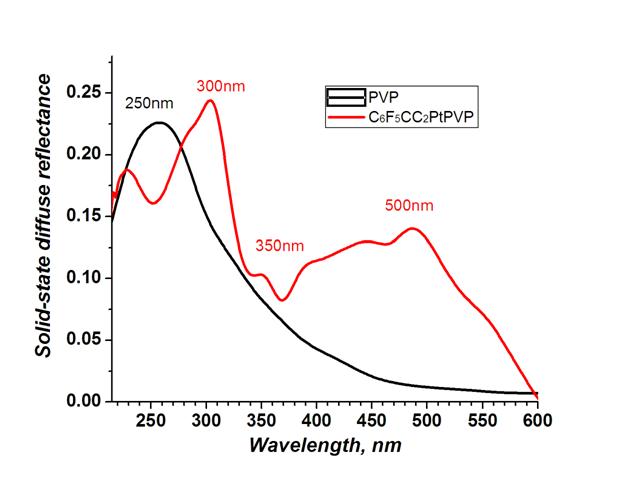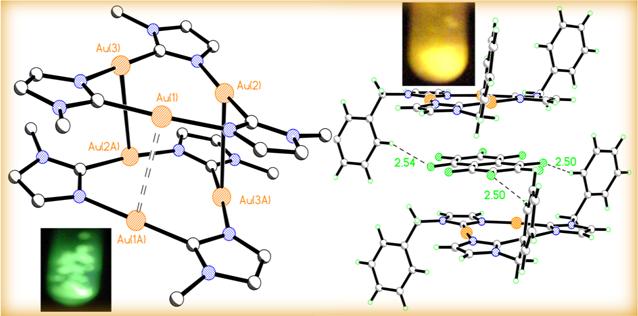www.acsprf.org
Reports: UNI349511-UNI3: Development of Light-Harvesting Metallopolymers with Tunable Optical and Electronic Properties
Manal A. Rawashdeh-Omary, PhD , Texas Woman's University
GENERAL IMPACTS:
This award has had strong impacts on the following during the 2-year support period of this PRF grant:
· Four MS students and six undergraduates total have joined the PI's group and worked on the project.
· Most trainees on the project were women and minority with low-income background.
· Five manuscripts, three published and two in preparation, that acknowledged PRF support.
· Six conference presentations that acknowledged PRF support and displayed the ACS PRF logo.
· Application of the PI for early promotion to Associate Professor has been granted.
· Three new collaborations with PhD-granting institutions (UT-Austin, UT-Arlington, and UNT).
· Graduation of two graduate students with MS degrees and career placement for both. A third student is slated for graduation with MS degree during this 2011-2012 academic year.
· Graduation of four undergraduate students with BS degrees and career placement for all of them. One of them was accepted at a pharmacy school in California and two others have joined the MS chemistry program at TWU.
· Two of the undergraduate student researchers in the PI's lab were selected by Rice University to travel (all expenses paid) to present their research at a Regional Undergraduate Chemistry Symposium.
TECHNICAL PROGRESS:
1. New classes of Ru(II)-based metallopolymers have been designed and synthesized. The retro-synthesis scheme for an example of these metallopolymers is shown in the following scheme:
[Ru(PVP)4(qdt)] <== [Ru(py)4(qdt)] <== [Ru(py)6]Cl2 <== cis-Ru(DMSO)4Cl2 (where bpy = 2,2'-bipyridine; qdt = quinoxaline-2,3-dithiolate)
While Ru(II) small molecules have received tremendous attention for solar cell applications, metalopolymer analogues remain lacking prior to this effort that we have just started. In addition to expanding the material regime via the coordinating polymer PVP, the presence of both p-acceptor and p-donor ligands in the target metallopolymers (bpy and qdt, respectively, in the above example) as well as the low symmetry (which imparts higher extinction coefficients) are attractive features in these new materials. The target complexes have shown encouraging results showing that they are indeed black absorbers that are capable of absorbing across the entire visible region (as manifest by their black color; Figure 1).
![IMG00017[1]](images/Paper_11632_abstract_16755_0.jpg) | ![IMG00019[1]](images/Paper_11632_abstract_16756_0.jpg) | ![IMG00023[1]](images/Paper_11632_abstract_16757_0.jpg) |  |  |
| cis-Ru(DMSO)4Cl2 | qdt ligand | Products [Ru(PVP)4(qdt)]and [Ru(py)4(qdt)] | ||
Figure 1. Photographs demonstrating formation of metallopolymer [Ru(PVP)4(qdt)] and small-molecule analogue [Ru(PVP)4(qdt)] showing they are indeed black absorbers while the starting reagent are not.
1. New classes of Pt(II)-based metallopolymers have been synthesized and characterized. These have included the two following sub-classes:
a. Polyvinylpyridine-based metallopolymers: PVP2Pt(CCPh)2; PVP2Pt(CCPhF5)2; PVP2PtCl2; PVP2PtQDT (where PVP = poly(4-vinyl)pyridine; QDT = quinoxaline-2,3-dithiolate). The resulting metallopolymers exhibit charge transfer absorption bands that are red-shifted from the p-p* absorption bands in the parent PVP polymer, as illustrated in Figure 2 for PVP2Pt(CCPhF5)2. The absorption of these Pt(II)-PVP metallopolymers cover the majority of the visible region, whereas PVP alone exhibits only UV absorption.
Figure 2. Solid state diffuse reflectance spectra of the metallopolymers complex (C6F5CC)2PtPVP2 (red) and polymer PVP (black).
b. Plythiophene-based metallopolymers: These were attempted by two different reactions (P3HT + PtCl42- or THT2PtCl2, where P3HT = poly(3-hexyl)thiophene and THT = tetrahydrothiophene). However, no evidence of a complete reaction was found in such attempts so no further derivatives were sought. This is possibly due to low basicity of P3HT, which although a better chromophore compared to PVP, is not as good a p-acceptor and its lone pairs are not as accessible.
2. New classes of Cu(I)- and Ag(I)-based metallopolymers and precursors thereof have been synthesized and characterized. These included:
a. The [MAz]3 azolate cyclic trimers (where M = Cu or Ag; Az = Tz or Pz). Aside from serving as metallopolymers precursors, additional applications of such azolate complexes in the area of sensing toxic organic vapor (such as carcinogenic vapors of benzene and other aromatic molecules) have also been discovered leading to a prominent publication in Chem. Commun. that was featured on the RSC blog web site as an example of excellence by undergraduate and female researchers. One of the sensor complexes, for example, has proved to manifest on/off switching of luminescence upon exposure and removal of benzene and substituted benzene molecules with remarkable sensitivity and selectivity.
b. These metallopolymers were obtained by reacting metallomacrocyclic [MAz]3 azolate trimers with PVP, leading to PVP[MPz]2 products (where M = Cu or Ag; Az = Tz or Pz); see Figure 3. The optical properties of these metallopolymers were such that they exhibit near-UV absorption and visible photoluminescence so their application in solar energy is limited. Nevertheless, the success of the synthetic strategy to allow d10 metal centers, including cost-effective metals of silver and copper instead of platinum or gold, is promising for further modification of the ligand system to lead to visible light-harvesting analogues.
Figure 3. Structure of Ag(I)-based metallopolymers with triazolate (left) and pyrazolate (right) co-ligands. Analogous Cu(I)-based metallopolymers of this type have also been synthesized and studied.
3. New classes of Au(I)-based metallopolymers and precursors thereof have been characterized. These have included the two following sub-classes:
a. The p-basic trinuclear complex [Au(m-C2,N3-bzim)]3 (where bzim, 1-benzylimidazolate) and its charge transfer adduct with the p-acidic organic molecule octafluoronaphthalene. The aurophilic interactions in the trimer alone are replaced by cooperative p acid-based quadrupolar and H...F dipolar interaction, which lead to further red-shifting of its electronic spectral bands (Figure 4). This work has already been published while metallopolymers expansion using strategy #3 above is ongoing. We plan to attempt that strategy with not only PVP but also P3HT because of the known thiophilic nature of gold.
Figure 4. Crystal structure and luminescence of [Au(m-C2,N3-bzim)]3 (left; benzyl substituents are truncated for clarity) and its charge transfer adduct with octafluoronaphthalene (right).
b. Au(I) molecular and metallopolymers complexes with N-heterocyclic carbenes. These studies have been in collaboration with the Cowley group at UT-Austin, whose role is to synthesize the carbene complexes, whereas the PI's group has been studying the optical properties toward solar cell and other photonic applications. So far we have characterized the absorption and emission properties of bithiophene-substituted imidazolyl carbene free ligands and Au(I) complexes, both of which were found to be superior chromophores, while ongoing work is targeting the corresponding metallopolymers obtainable by electropolymerization of the monomeric complexes.



